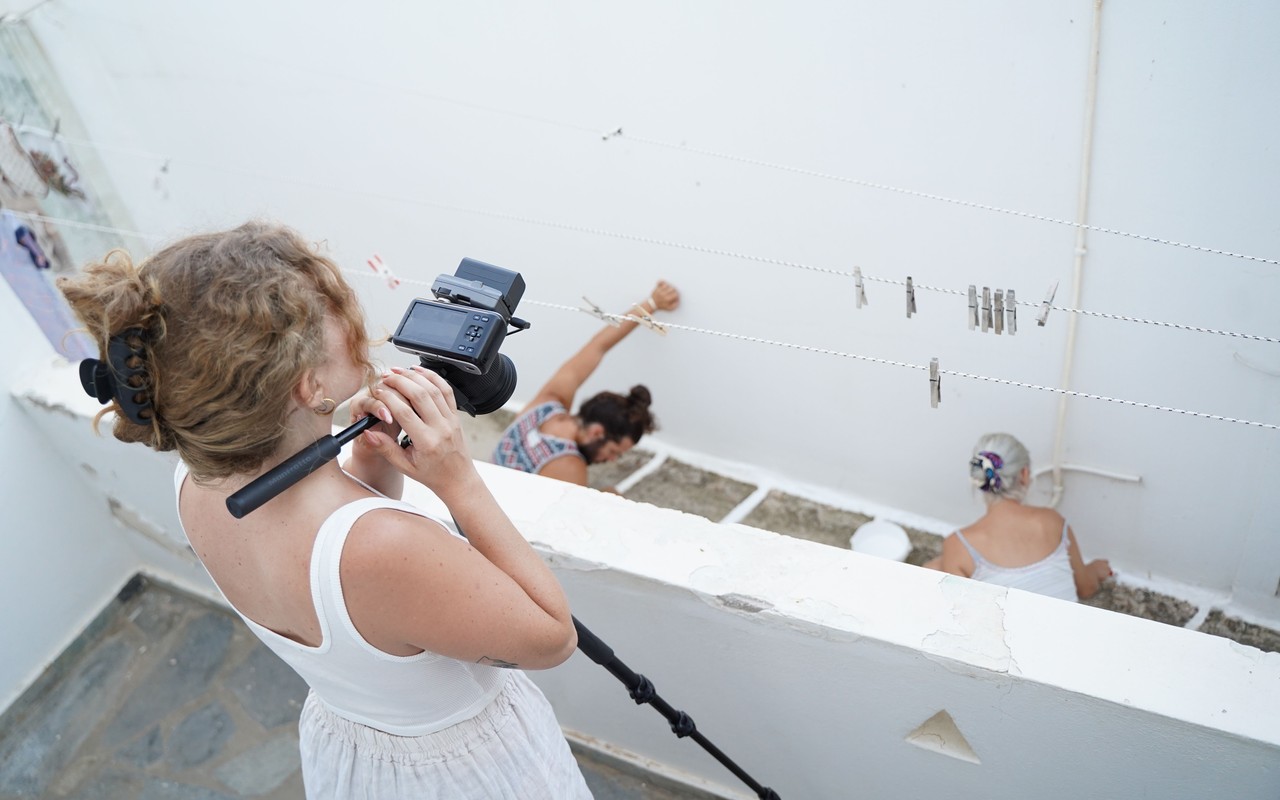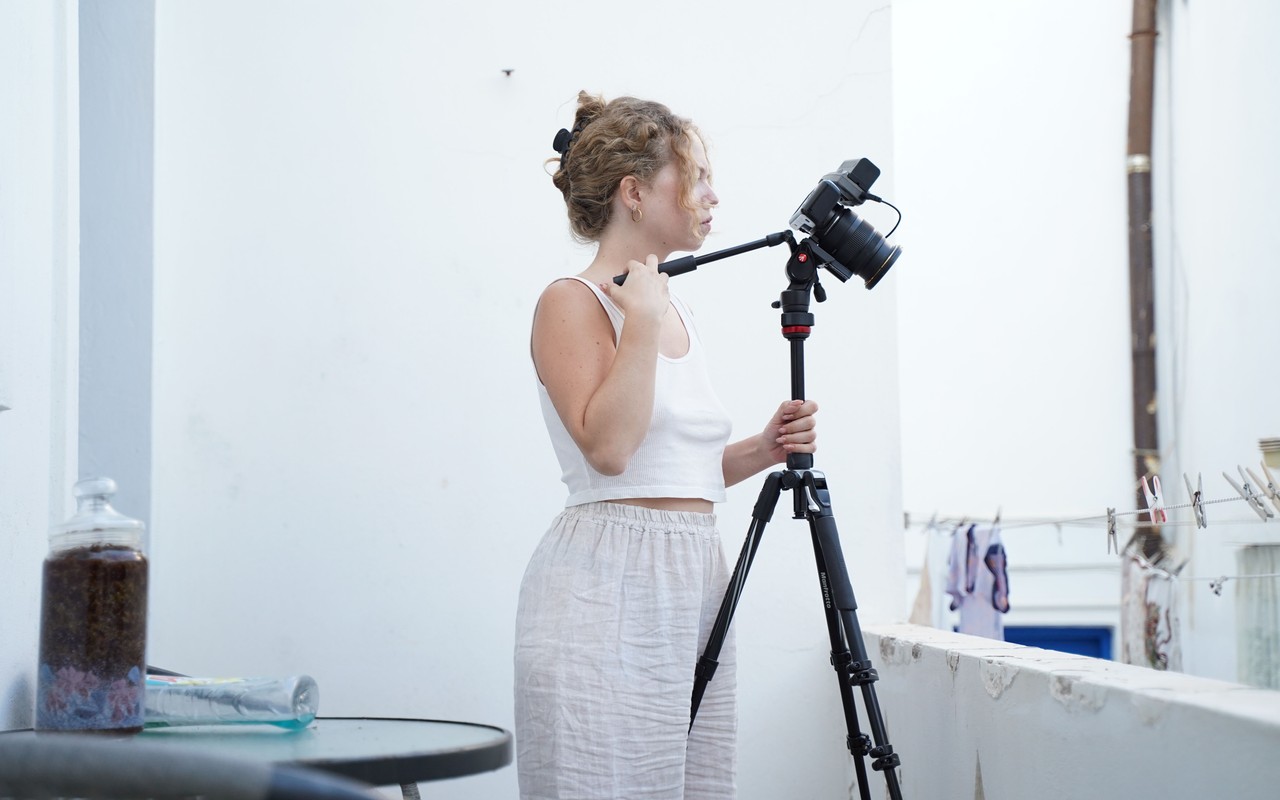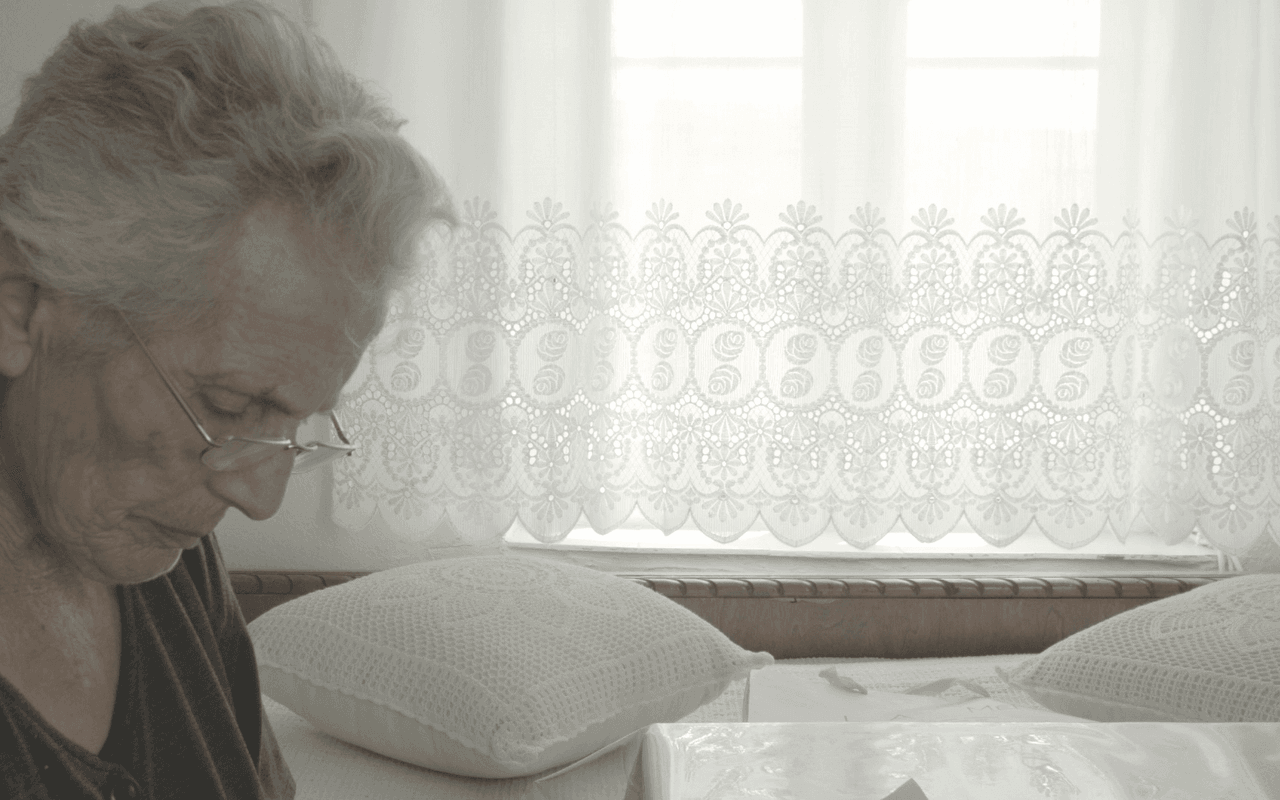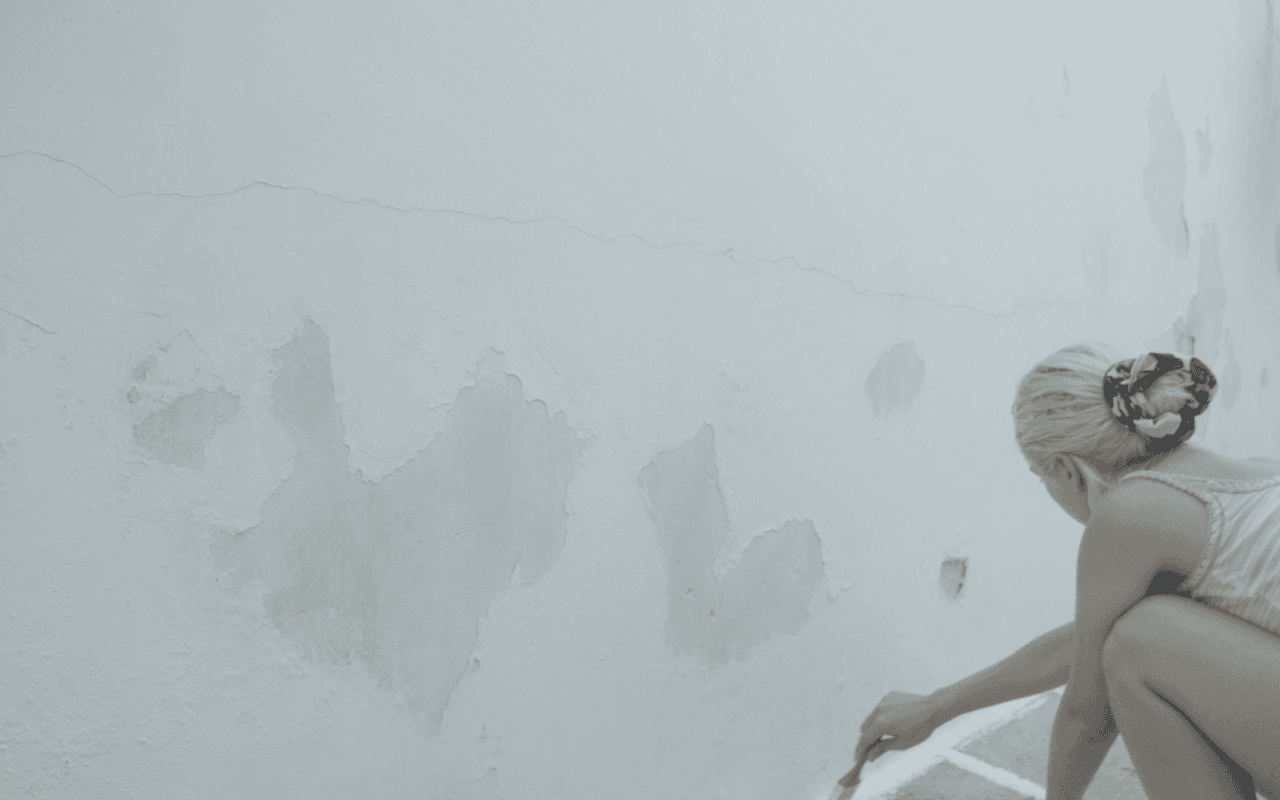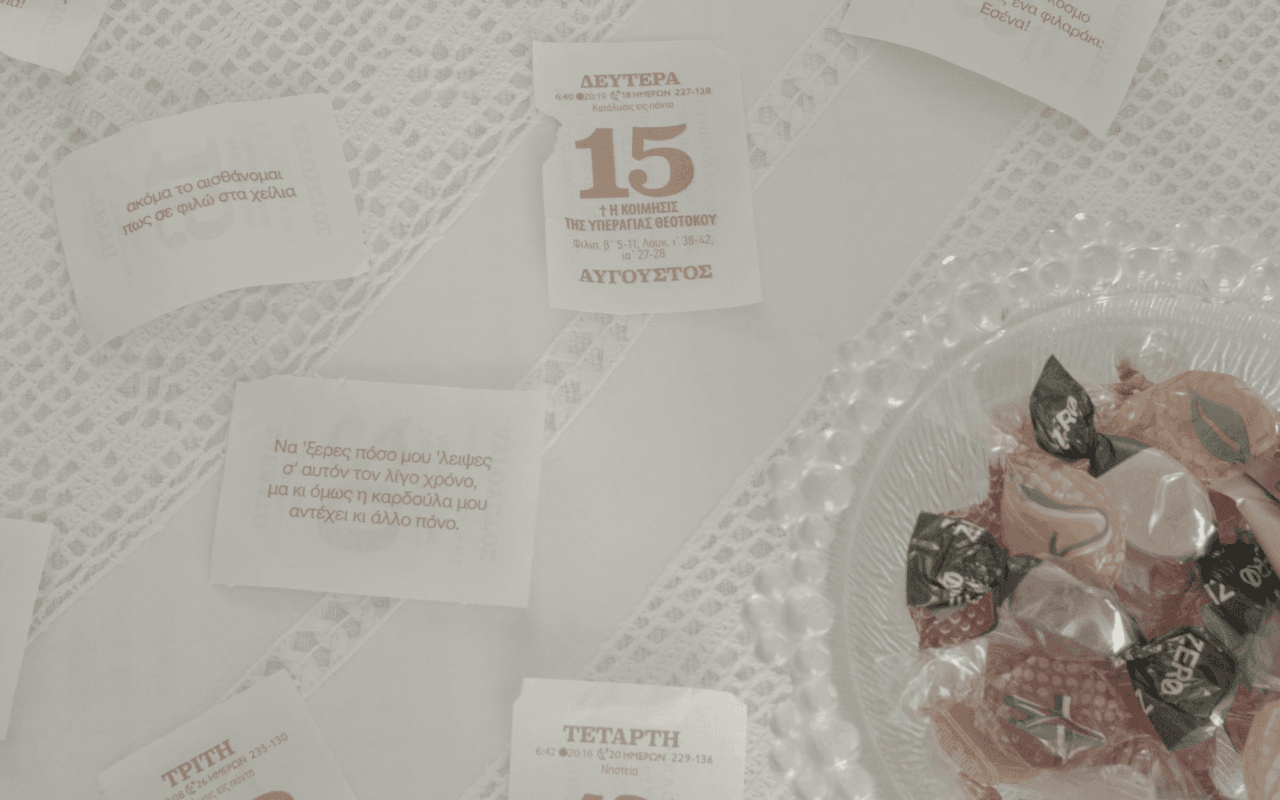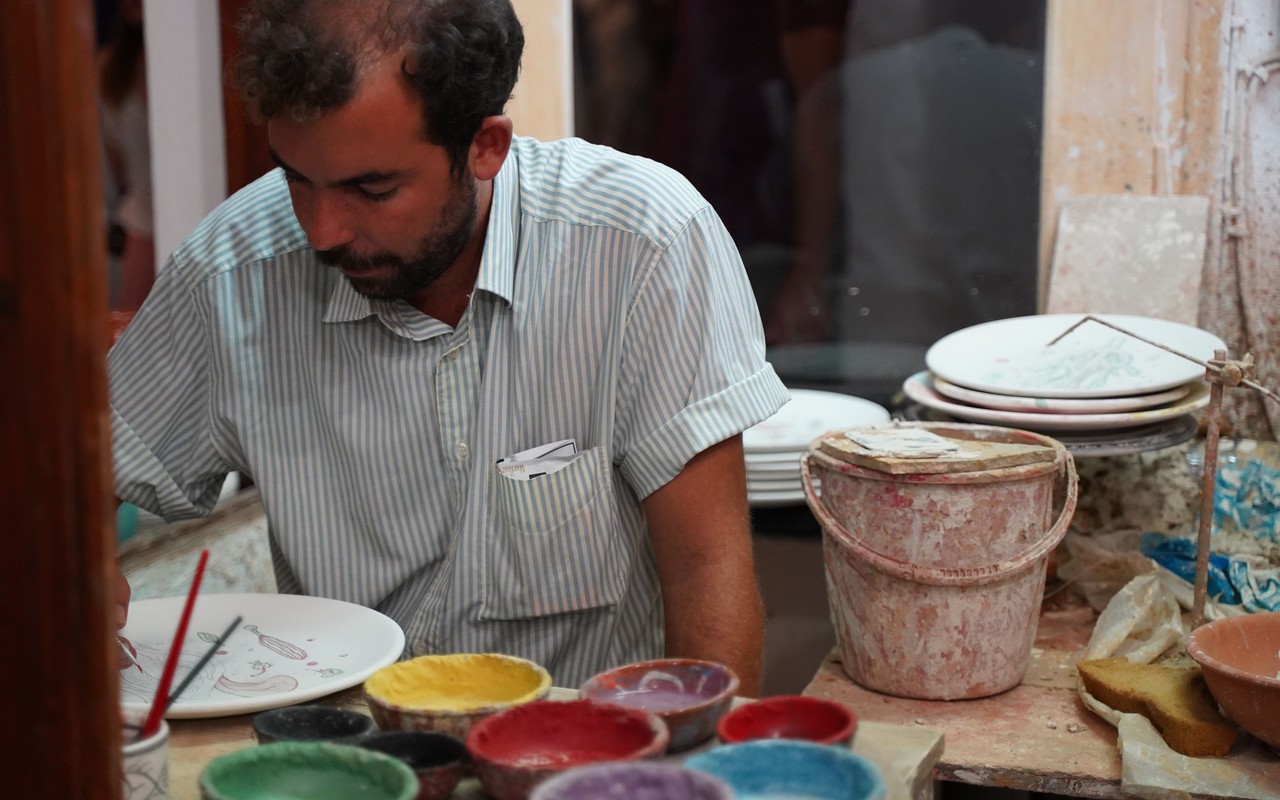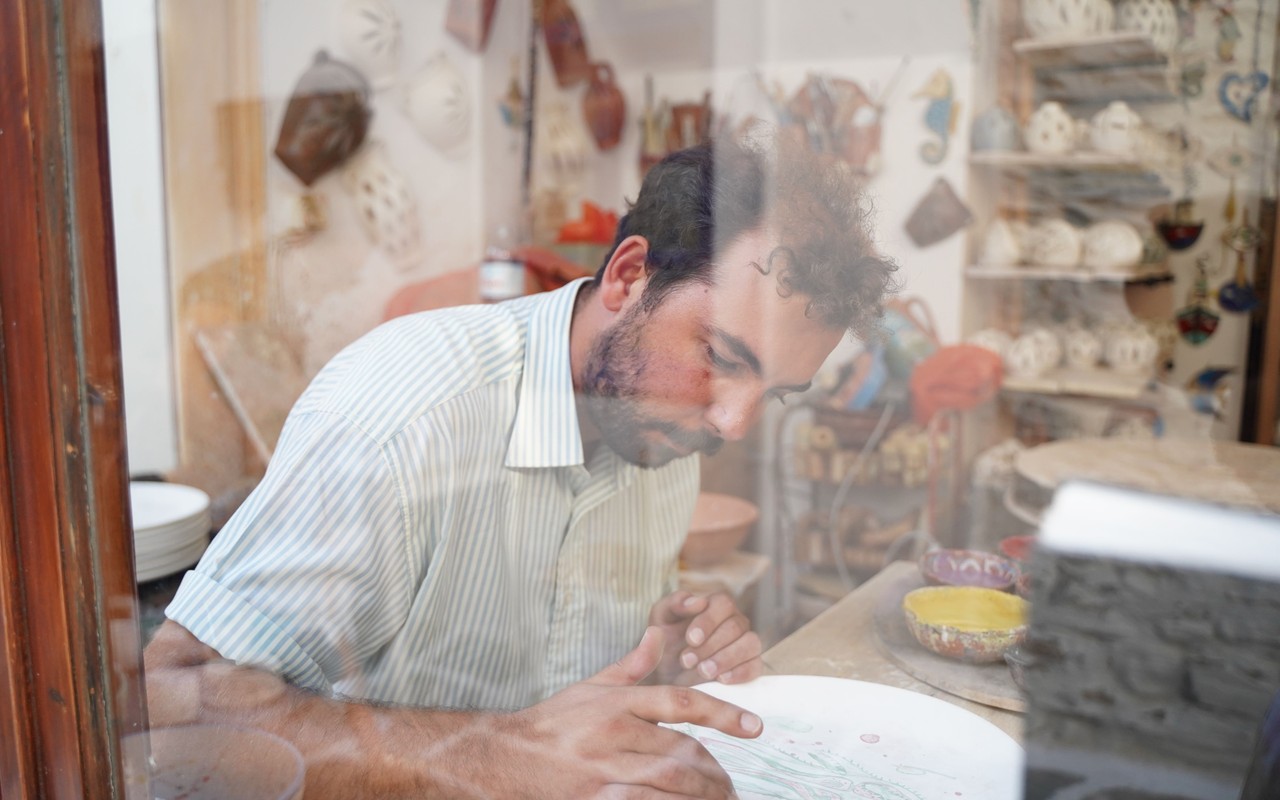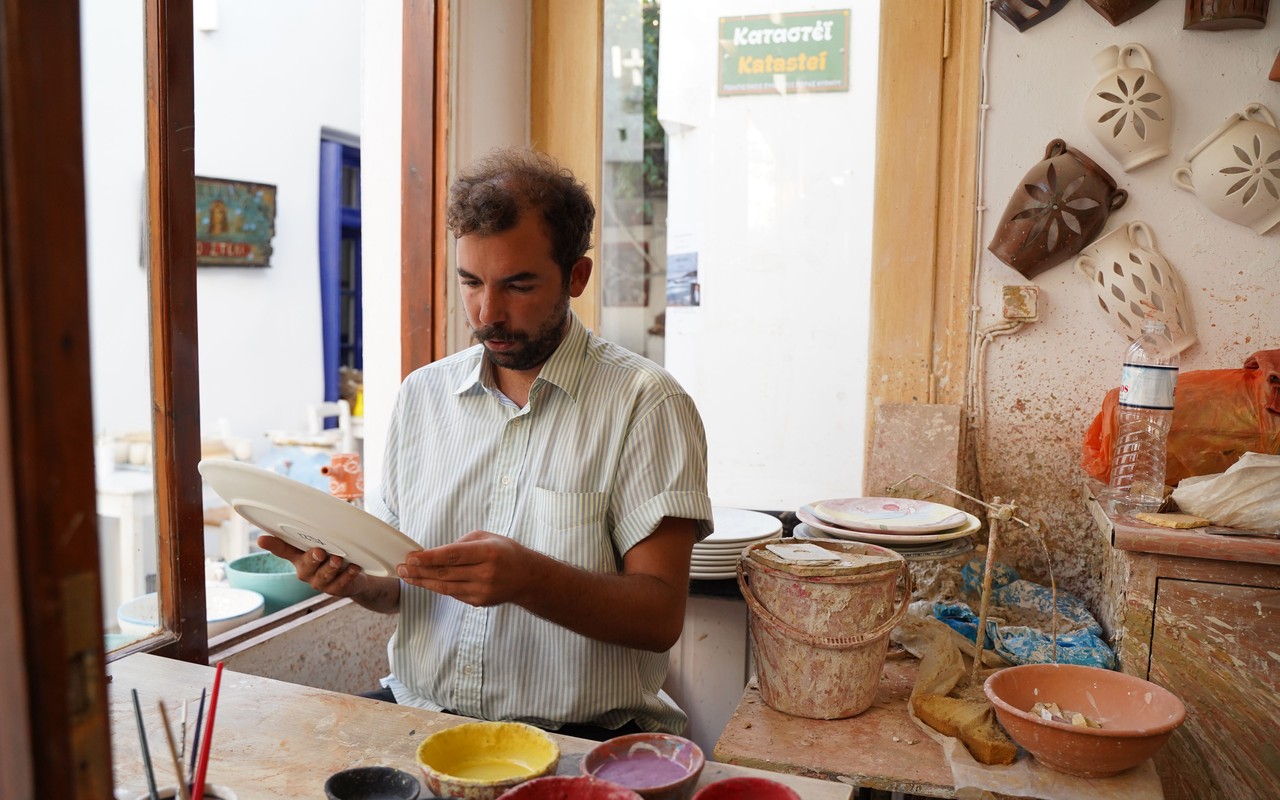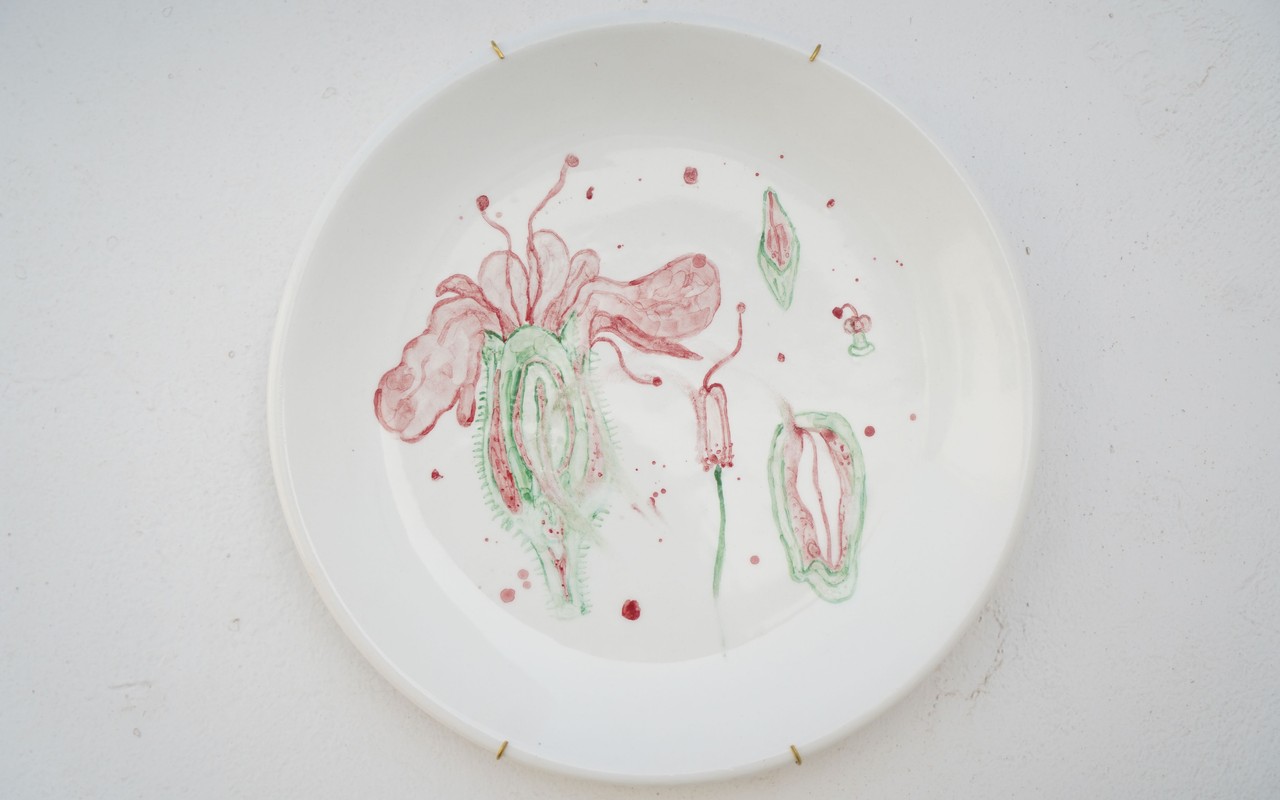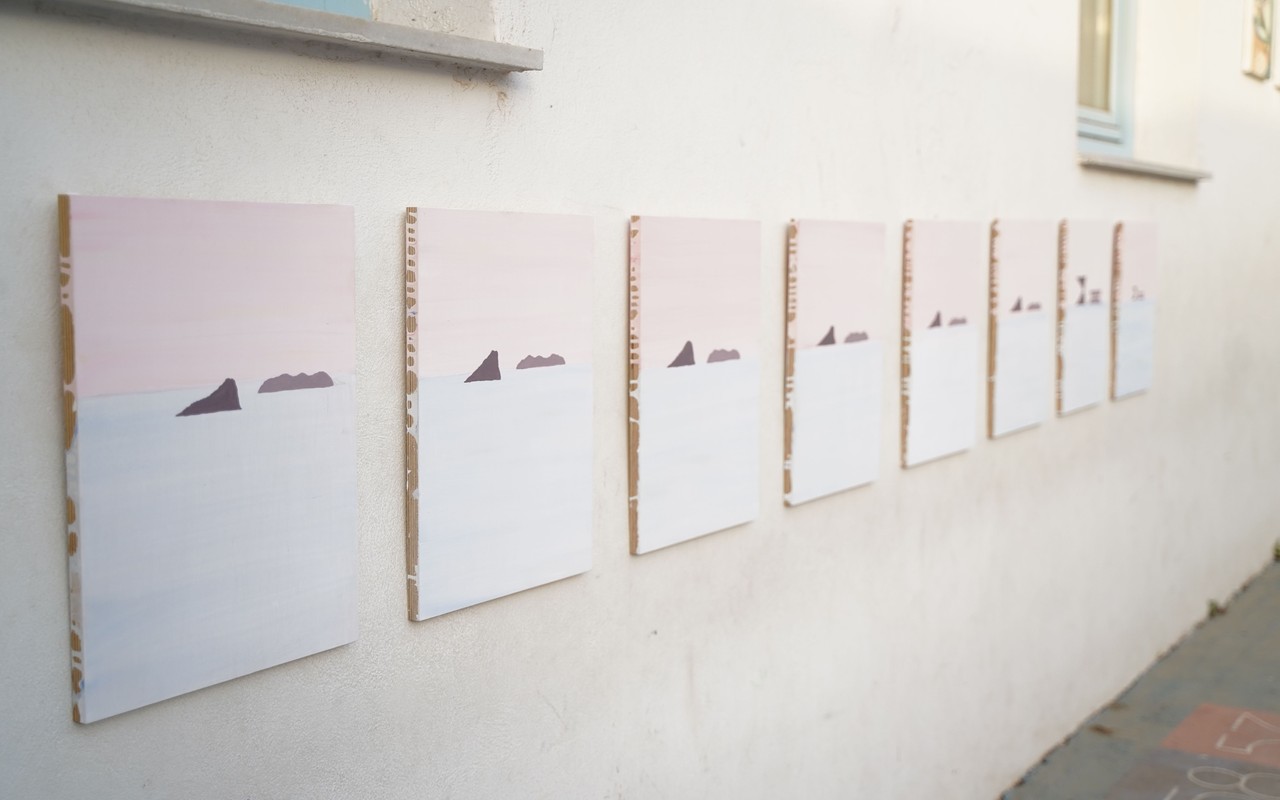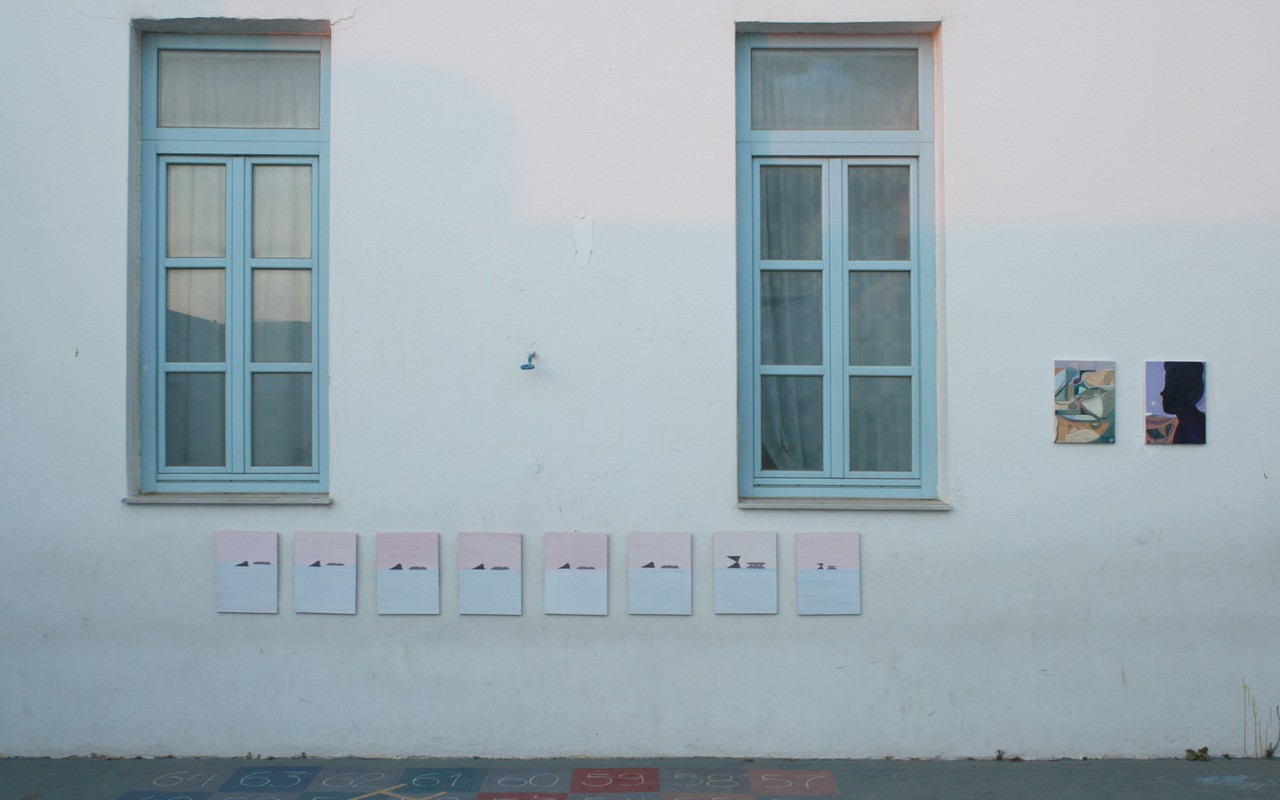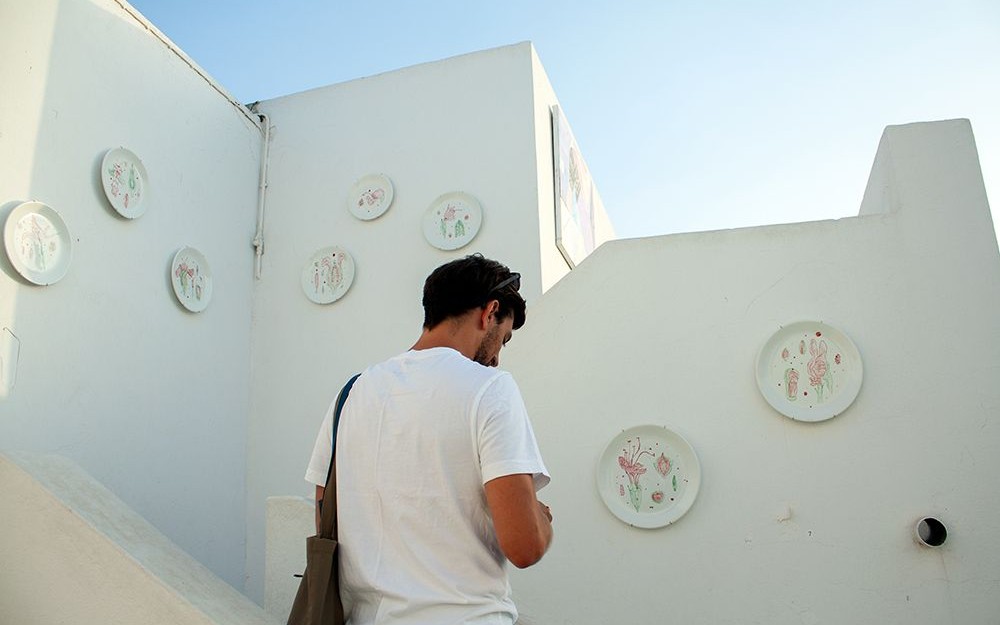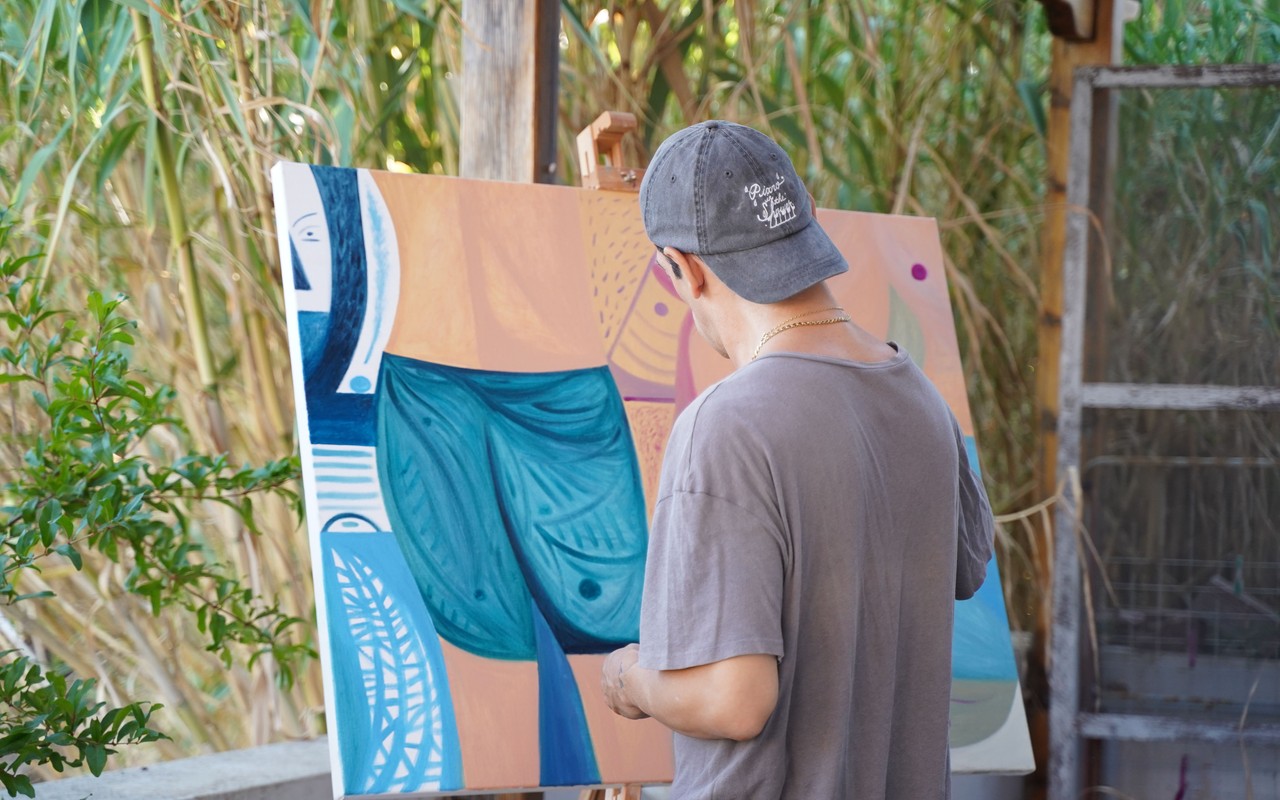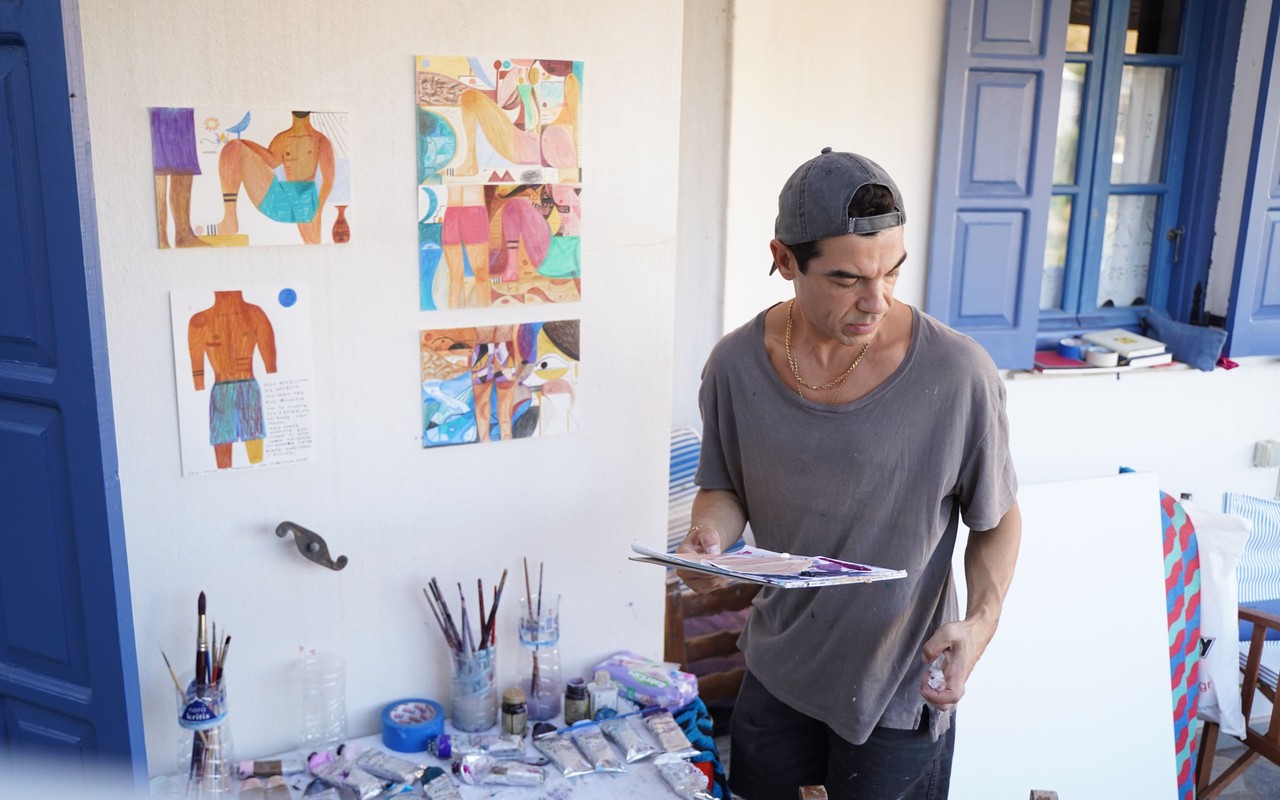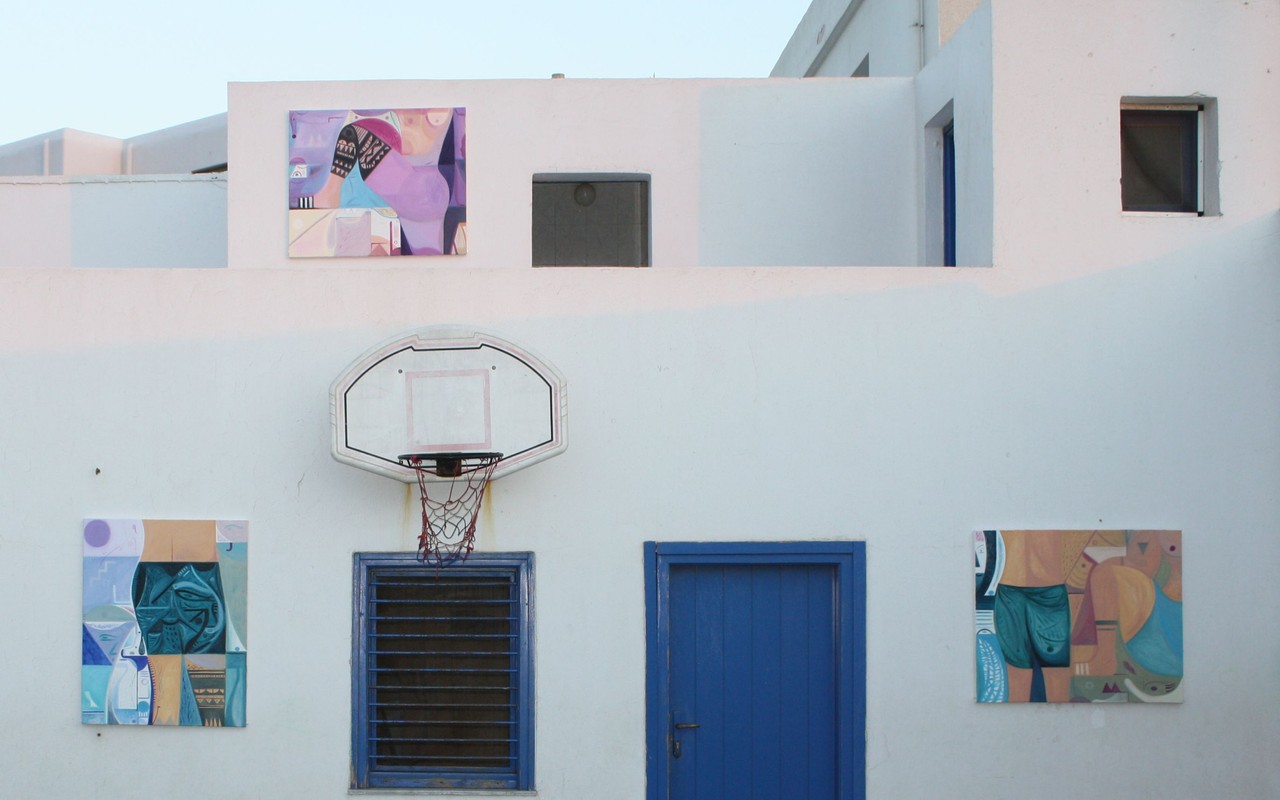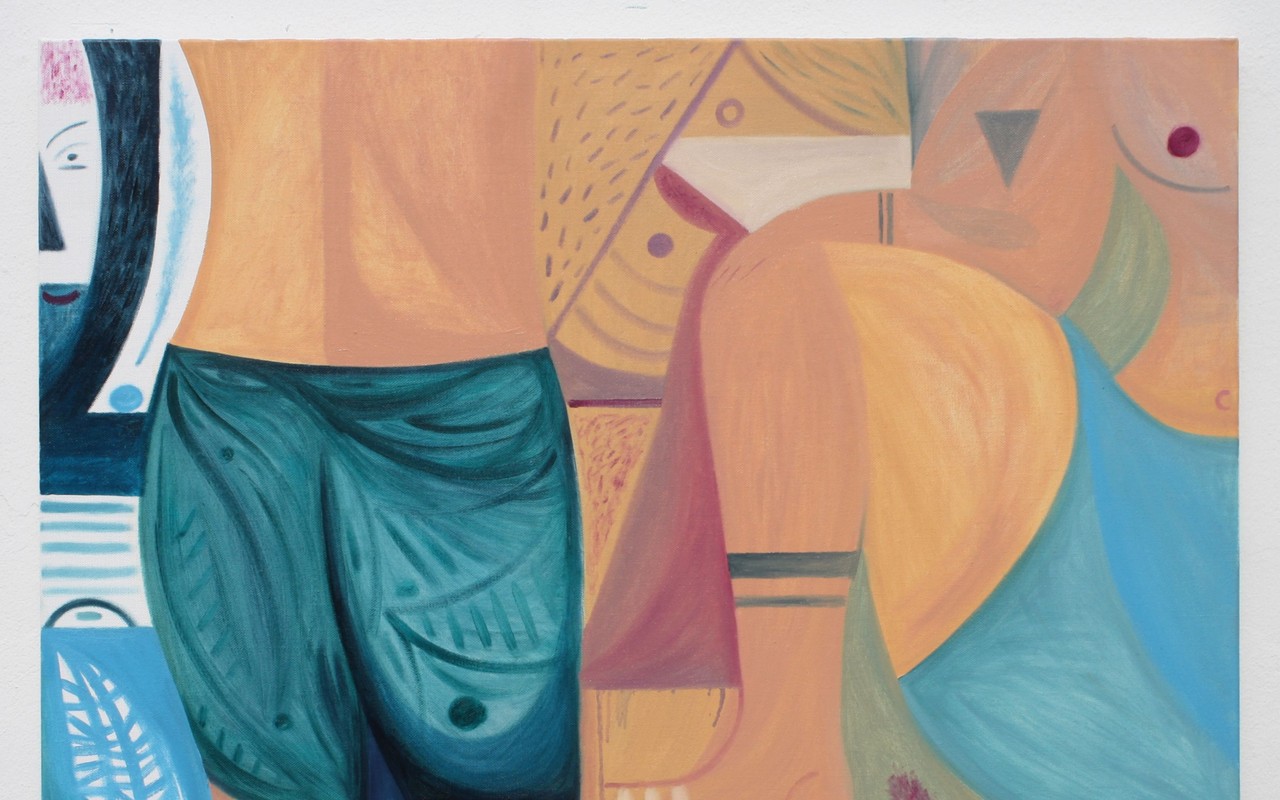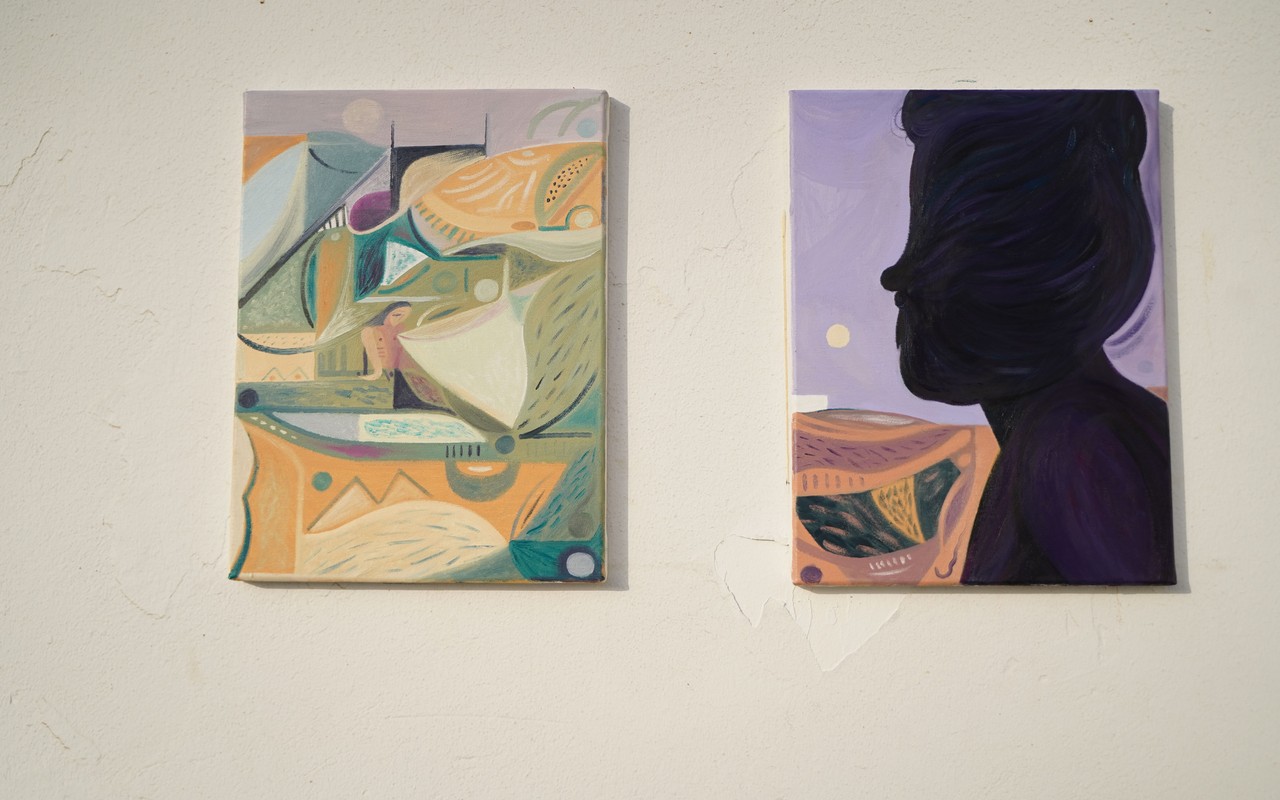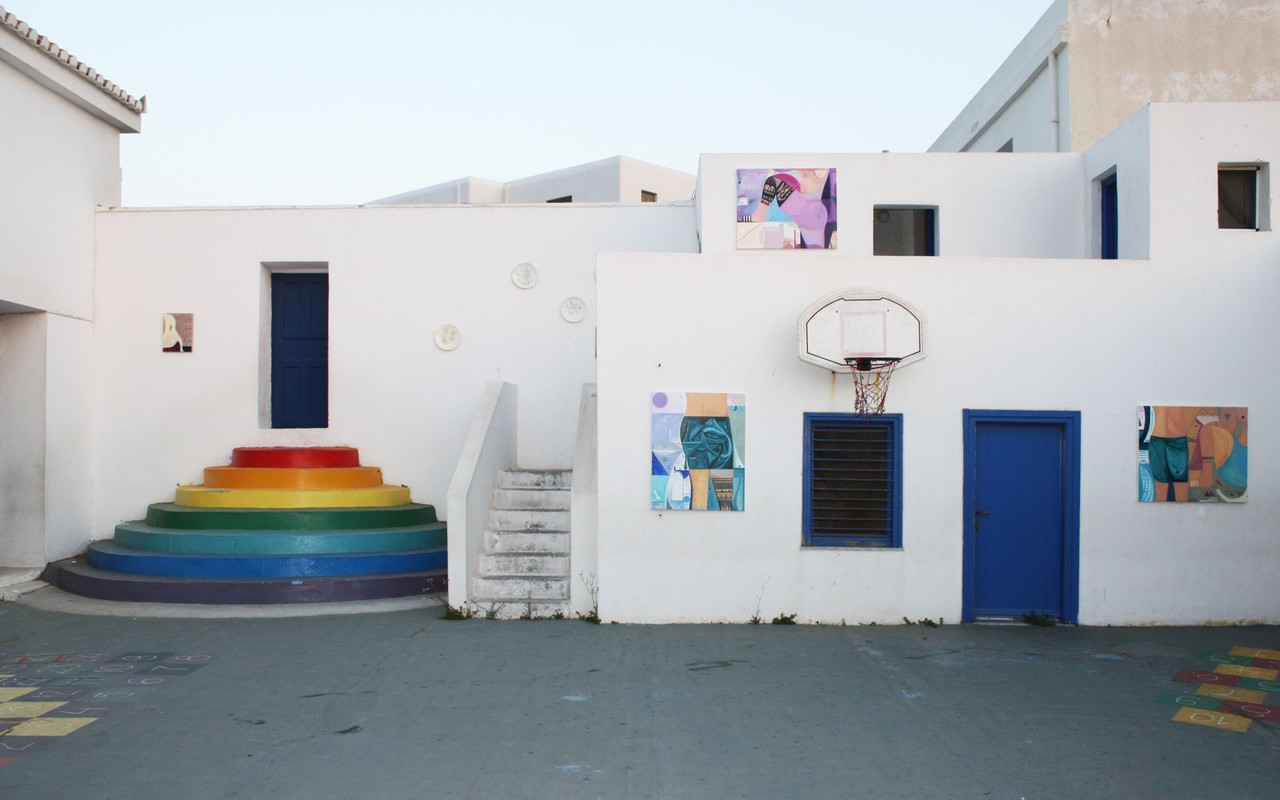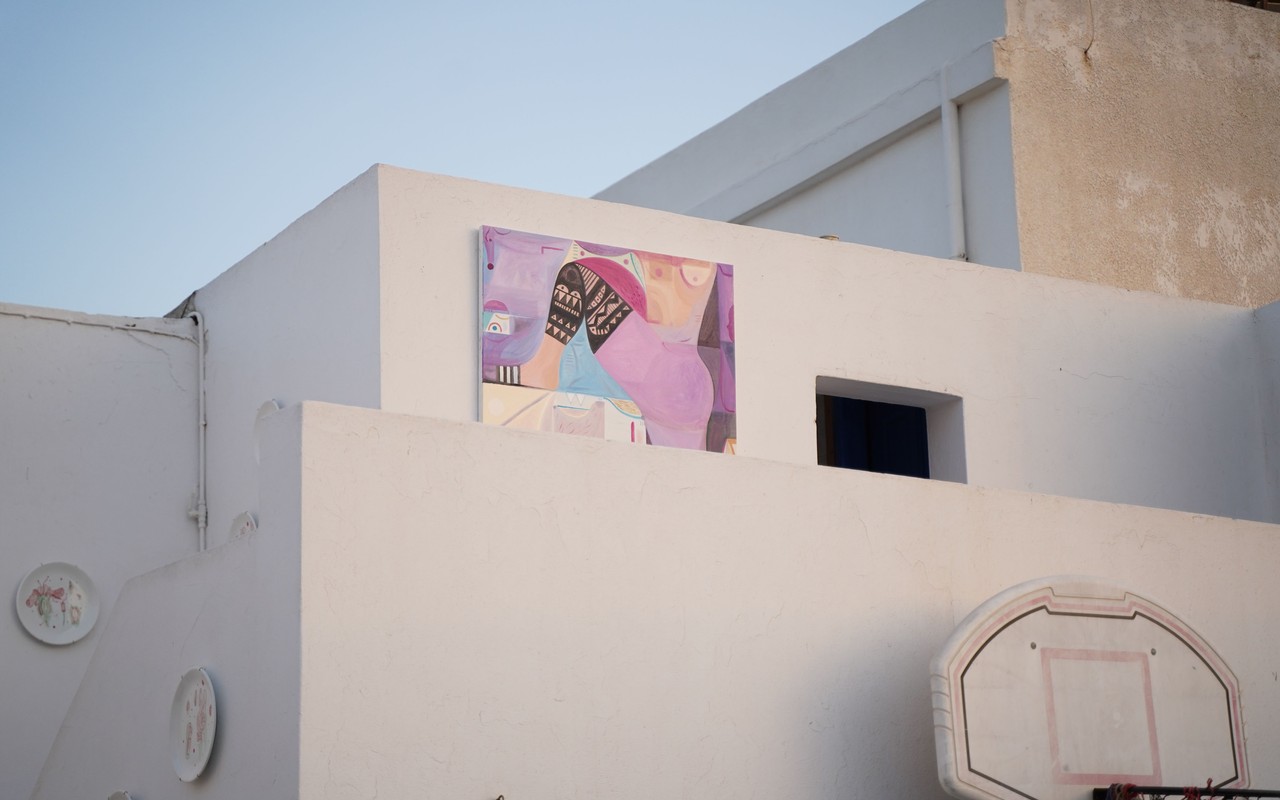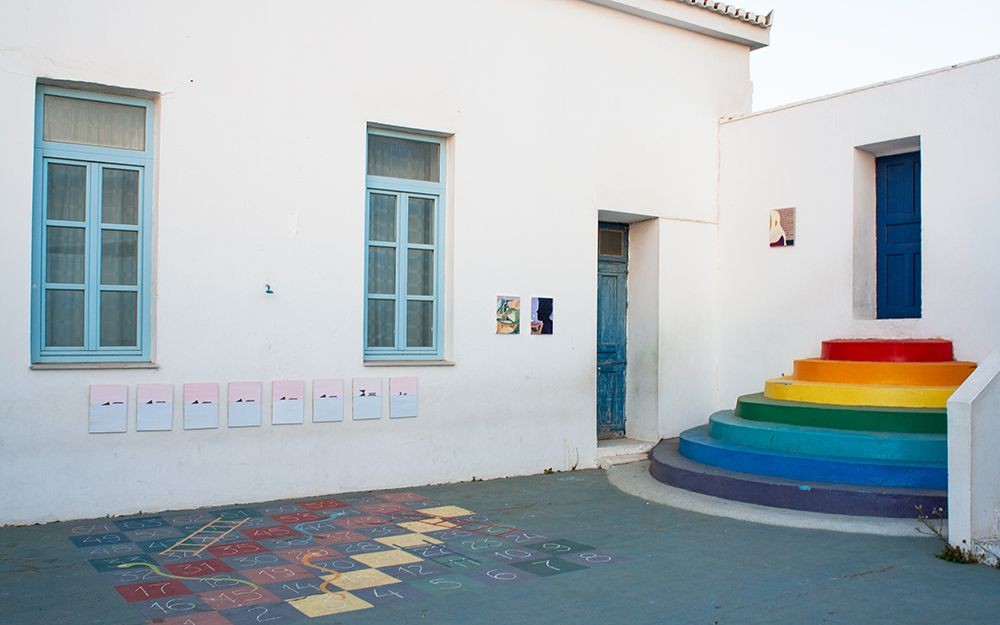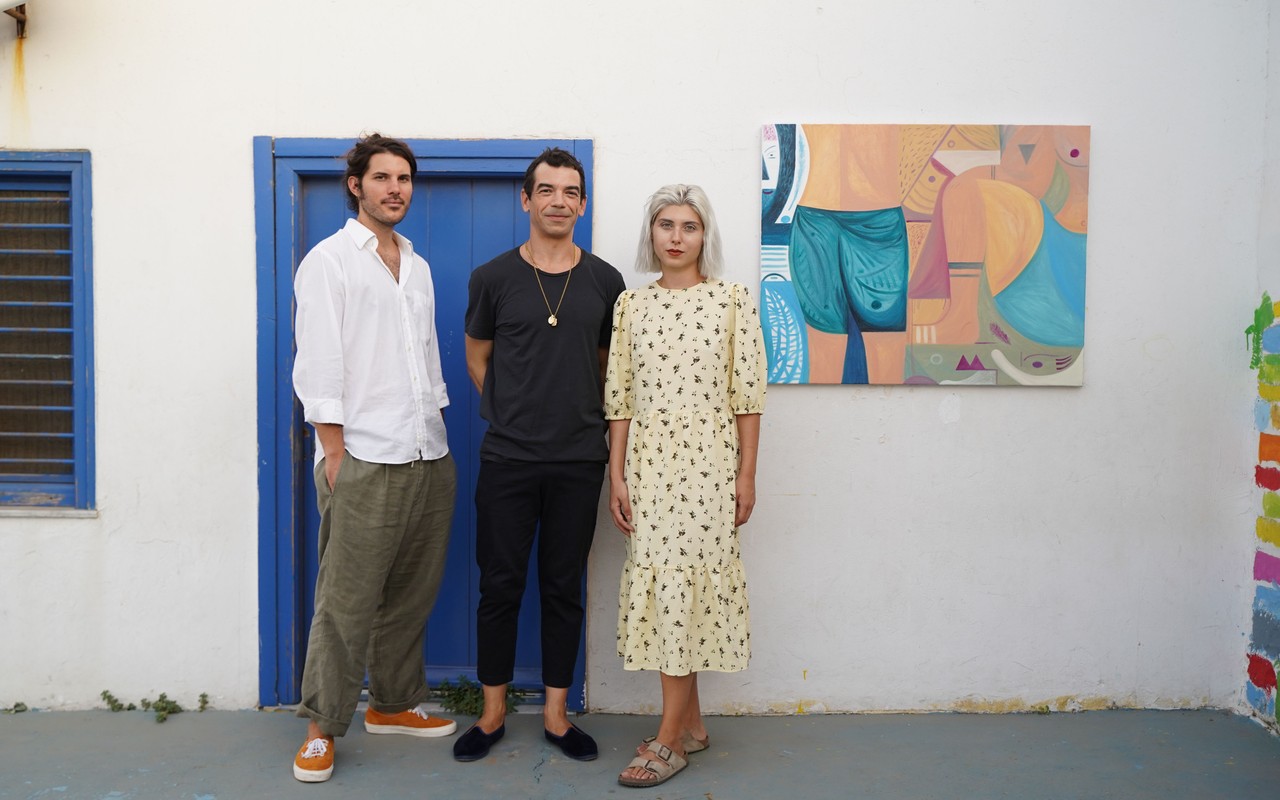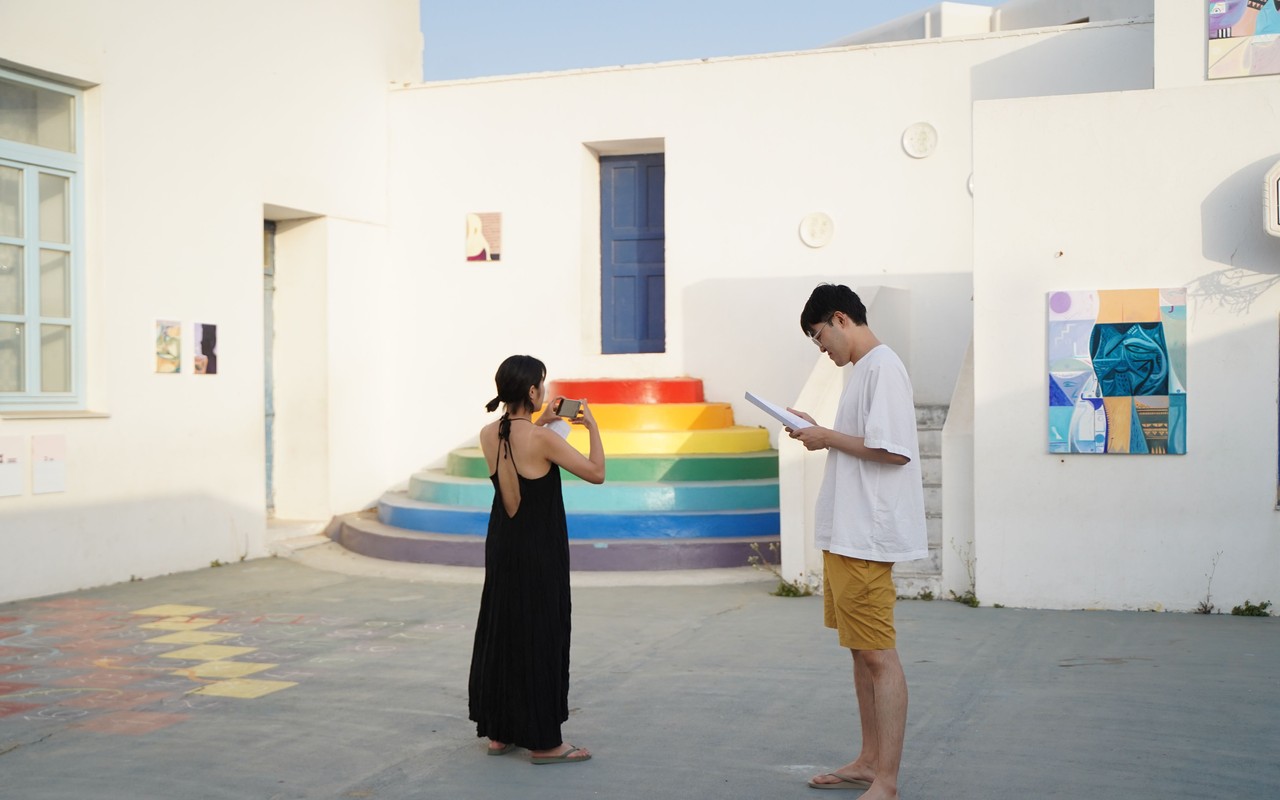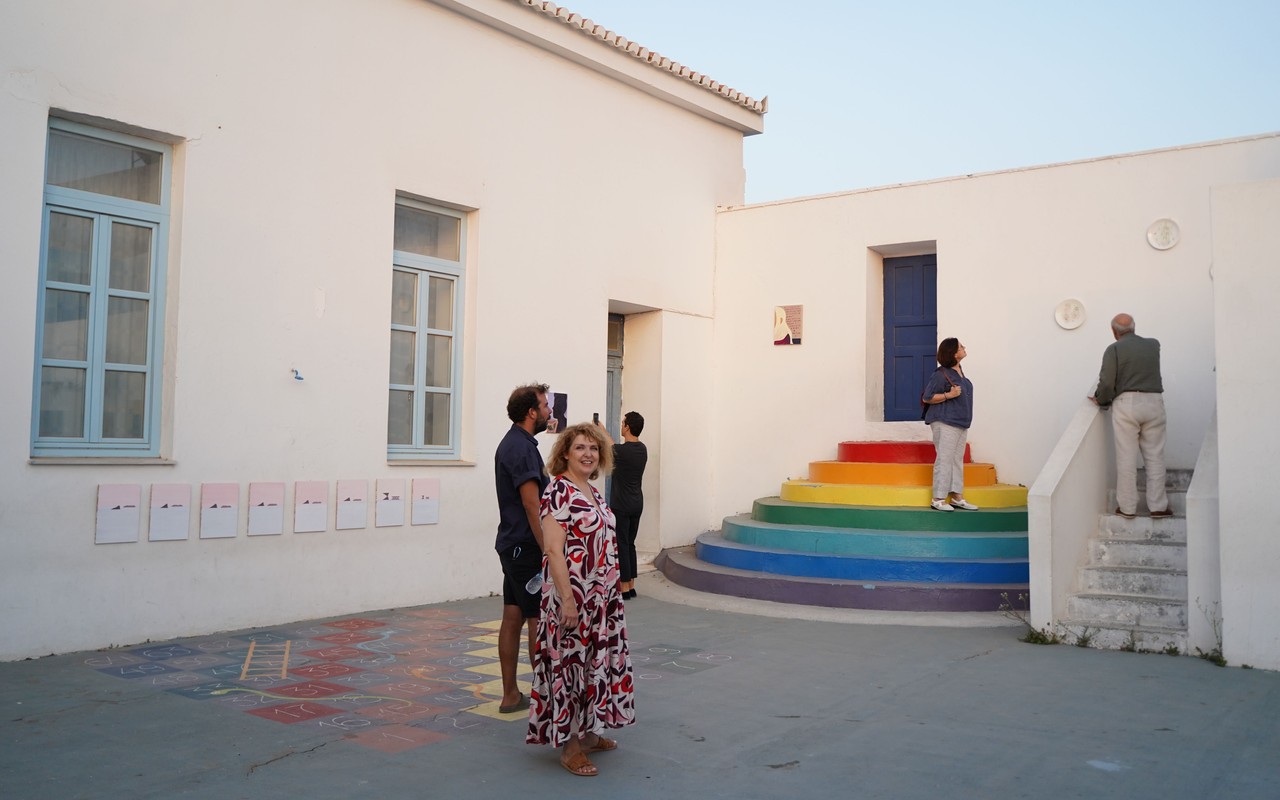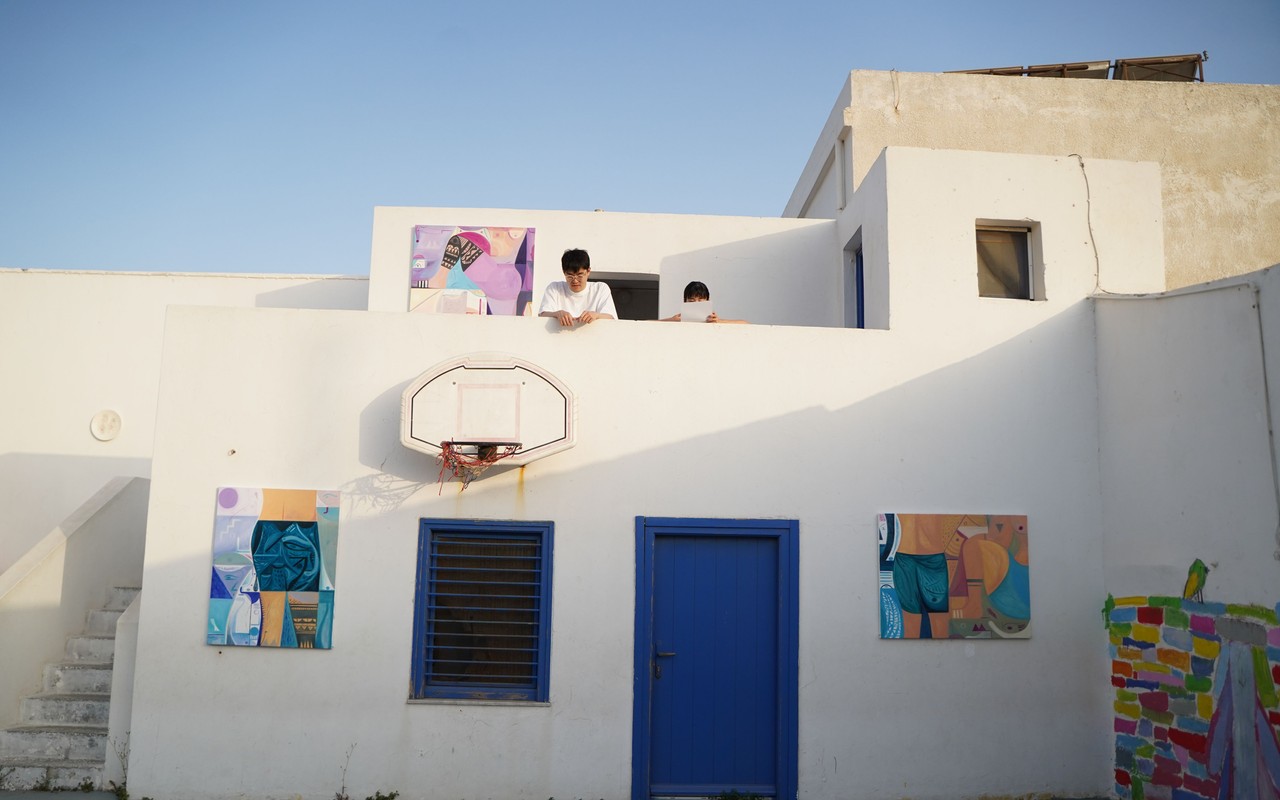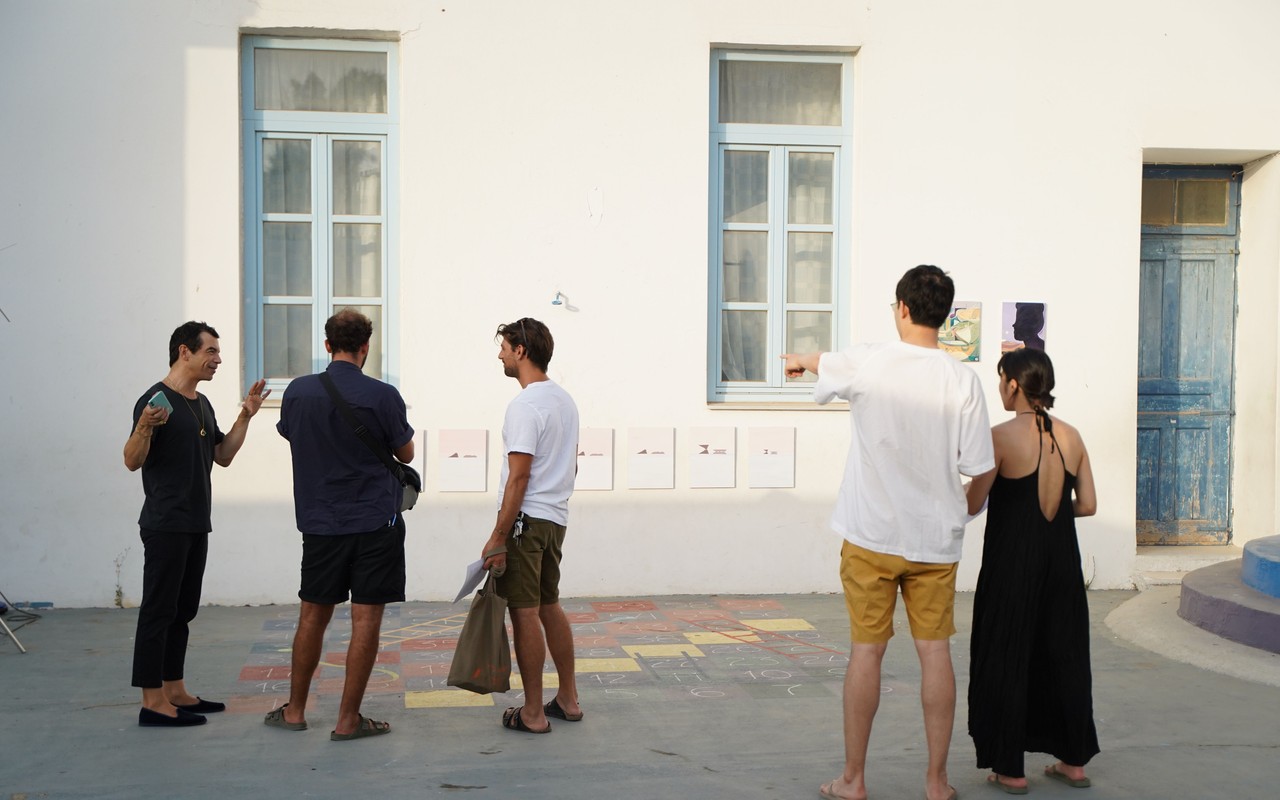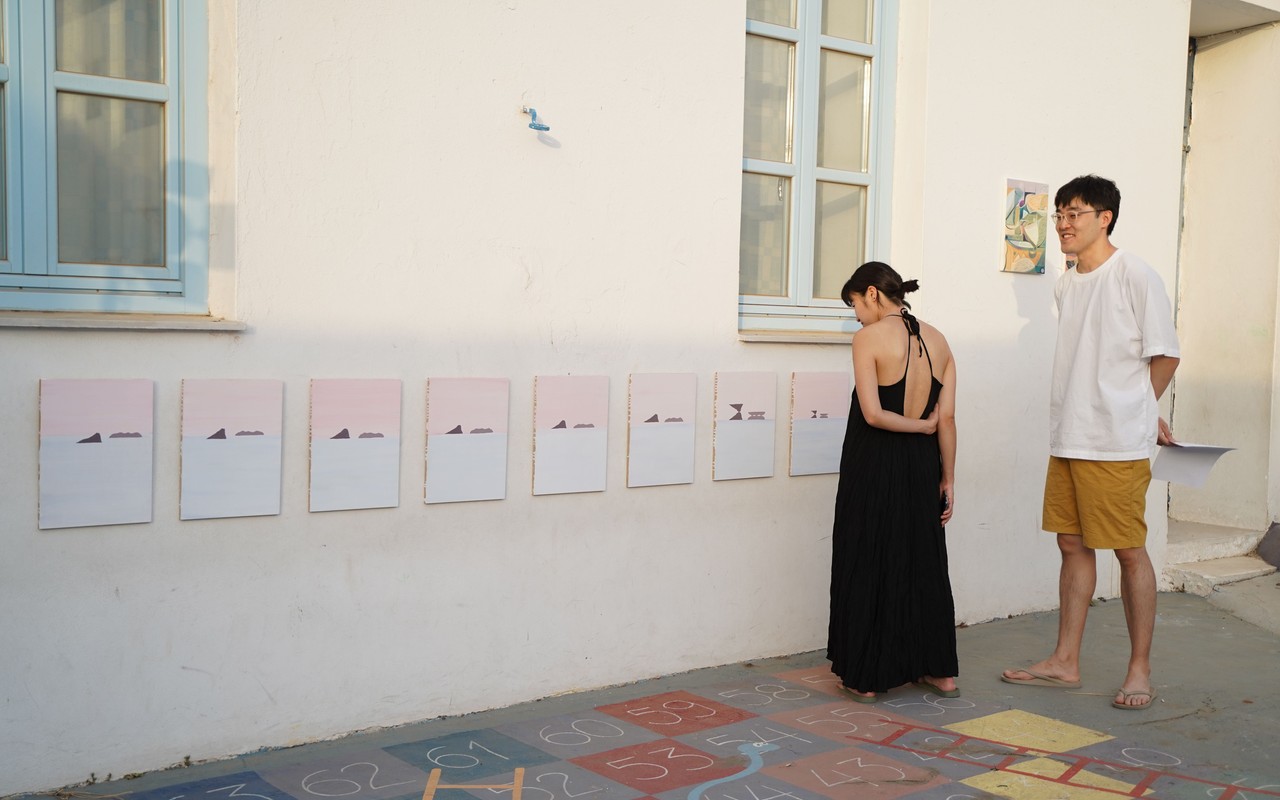The residency art program Thermia Project, curated by Odette Kouzou, is launching its first year in Kythnos, or ‘Thermia’ as called by the locals, and aspires to be an institution of contemporary art on the island. The name ‘Thermia’ stems from the natural hot springs located on the northeast part of the island. The program prioritizes, both the realization of a series of productions focusing on artistic research, and the engagement of local communities and visitors with contemporary art.
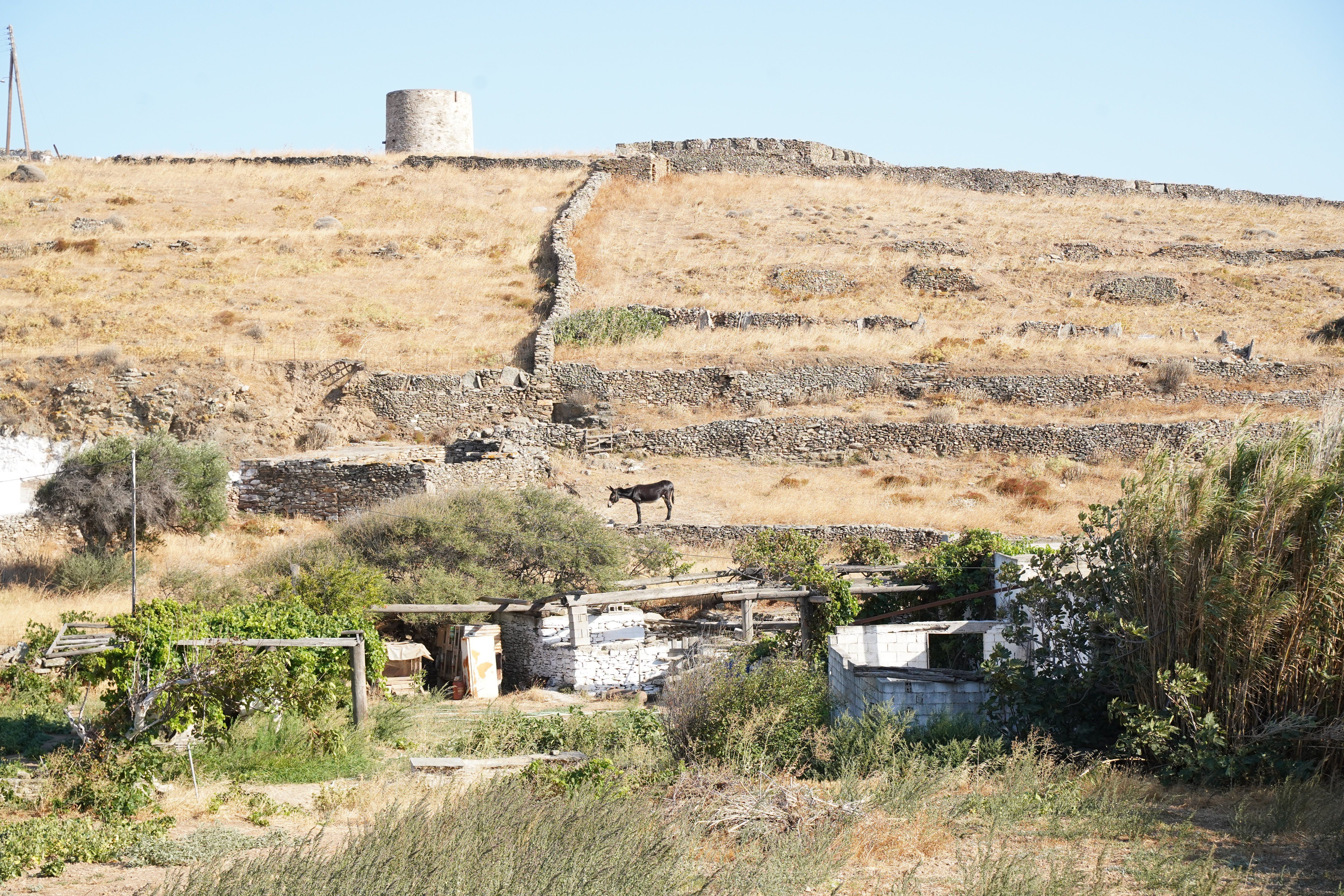
Centered around an alley in ‘Chora’, on the island of Kythnos’, Niki Soumpassis’ film the alley (Maria, Mary, Martha) reveals a microcosm situated, in space, within this small backstreet and, in time, around the celebration of the ‘Dormition of the Mother of God’. Social relations, everyday habits, exterior and interior spaces, rituals, customs and domestic practices are being traced between the people living there, either permanently or temporarily. Images, sounds, conversations and excerpts from Mary Vassalou's book on the unknown island, with a voiceover by her, compose and narrate a story about the alley, with multiple layers of interpretation
The process of constructing the film has, as a starting point, Niki Soumpassis’s academic background in anthropological research, and while it is being informed by ethnographic methodologies of research and film production, it deviates from those disciplines. The result is a composition of participatory observation, discussions, auto-ethnography and fiction, formed through her personal gaze on the alley. The onset and movement of this gaze is guided, however, by the rhythm and narratives of the three women mentioned in the title, Maria, Mary and Martha, the latter of which is a fictional character from the book by Mary Vassalou.
Niki Soumpassis creates an audio-visual composition which unfolds on Kythnos, around the days leading up to the preparations for the celebration of the ‘Dormition of the Mother of God’, on August 15, according to the Orthodox Christian Church. The festivities for ‘Panagia’ (The Holy Mother of God) are held on the island on the eve, that is on August 14, in contrast to many other areas of Greece, where it is customary to celebrate on the actual day, August 15.
There is a series of traditions around those celebrations, performed by women of the island, either according to the ways that their mothers and grandmothers taught them, or according to their own personal preferences and needs. In this context, a dual notion of ‘tradition’ is being implied in the film. On the one hand, tradition as a fluid set of practices as opposed to a closed restricted set of rules often imposed by a normative narrative, and on the other hand, a tradition that confines, that punishes in case of deviation, but also highlights the possibility of re-contextualization and escape from it.
As we are informed from the book The Ceramics of Kythnos, by Giorgis Venetoulias, Kythnos, or ‘Thermia’, produced ceramics extensively, as early as the middle of the 19th century, brought by the Sifnian potters to the island. The profession of ‘tsoukalas’, as the locals call them, was mainly adopted by residents of the village of ‘Dryopida’. Studios and ceramic kilns existed in various parts of this area, such as in ‘Kaminia’ during the 19th century and later in ‘Spilia’, as well as in other parts of the island such as ‘Lefkes’, ‘Kanala’, ‘Merichas’ and ‘Ai Dimitris’. 1
Inspired by the ceramic tradition of Kythnos, Alexandros Simopoulos worked in a pottery studio during his stay on the island, and created a series of painted ceramic plates. Ceramic plates are often adorned with floral decorations. Thus, the decorative aspect of his plates exhibits a predominant theme of floral motifs. His works, inspired by the island’s landscape, focus on a very small scale of low flora, such as endemic plants, herbs and flowers found on Kythnos.
He observes elements on the island which are often invisible and unknown, and brings them to the forefront of his iconography. He chose to depict those elements not in the way he sees them in their natural environment but through images he found in botany books. The purpose of this is to explore an even smaller scale, that of their reproduction system, which is reminiscent of love organs, dreamy structures, nests and magical flying objects. Thus, he bestows a mystical property upon his works, observing that, in folklore, the invisible and intangible acquire supernatural powers and are often associated with ghosts, spirits, fairies and other magical elements.
He also observes the everlasting relationship between the islets of ‘Piperi’ and ‘Serifopoula’, as seen from Kythnos, as well as the landscape surrounding them. He perceives a relationship between them, either eternal love or courtship, or a special form of communication. His paintings on wood are inspired by the meteorological phenomenon of ‘Fata Morgana'. The term is used to indicate a special kind of reflection, an optical illusion created due to temperature inversion. Objects appearing on the horizon of the sea, such as ships, islands or islets, seem elevated as if floating on air.
Antonakis Christodoulou's multifaceted artistic approach, with obvious influences from modernism and the art scene of the “Generation of the 30’s” in Greece, explores the notion of myth within the contemporary context. His interest in pop culture and the use of various different media become an attempt by the artist to register a unique visual language, through the depiction of contemporary mythology and aesthetics from pop culture.
Within this mythological system, Antonakis collects images from everyday life during the tourist season in Kythnos. He observes that, here, tradition is ultimately not rejected. However, it is altered by coexisting with that which is perceived as “modern” today. The aesthetic alterations of contemporary Greece are evident throughout the island. He notices an important detail though. It is in perfect harmony with the energy of the place, almost as if Kythnos is several decades ahead of its time, in terms of various aesthetic rules. He is wondering if a hasty, even cursory, attempt of modernization could lead to the construction of a new aesthetic language. Could the identically dressed locals and young men in colorful Hollister sweatshirts and Havaianas, listening to mixed ‘Foureiras’ in the evening while drinking complicated cocktails, emerge as new monuments - symbols of beauty?
The form and colour choices in the paintings of Antonakis capture both the natural shades of the landscape and the intense artificial tints of todays’ clothes, stores and signs, which occupy the island every summer. Through the choices he makes for the creation of the paintings, we are transported in this space and time, with depictions of a mix of modern and traditional, with what is being accepted or not. Re-appropriating mainstream and pop iconography in a deeply personal way, Antonakis attempts to expand the meaning and practice of myth-making, while contributing to the process of creating a contemporary mythology.
Thermia Project 2022 was realised with the kind support of the Municipality of Kythnos and the financial support of the Ministry of Culture and Sports.


